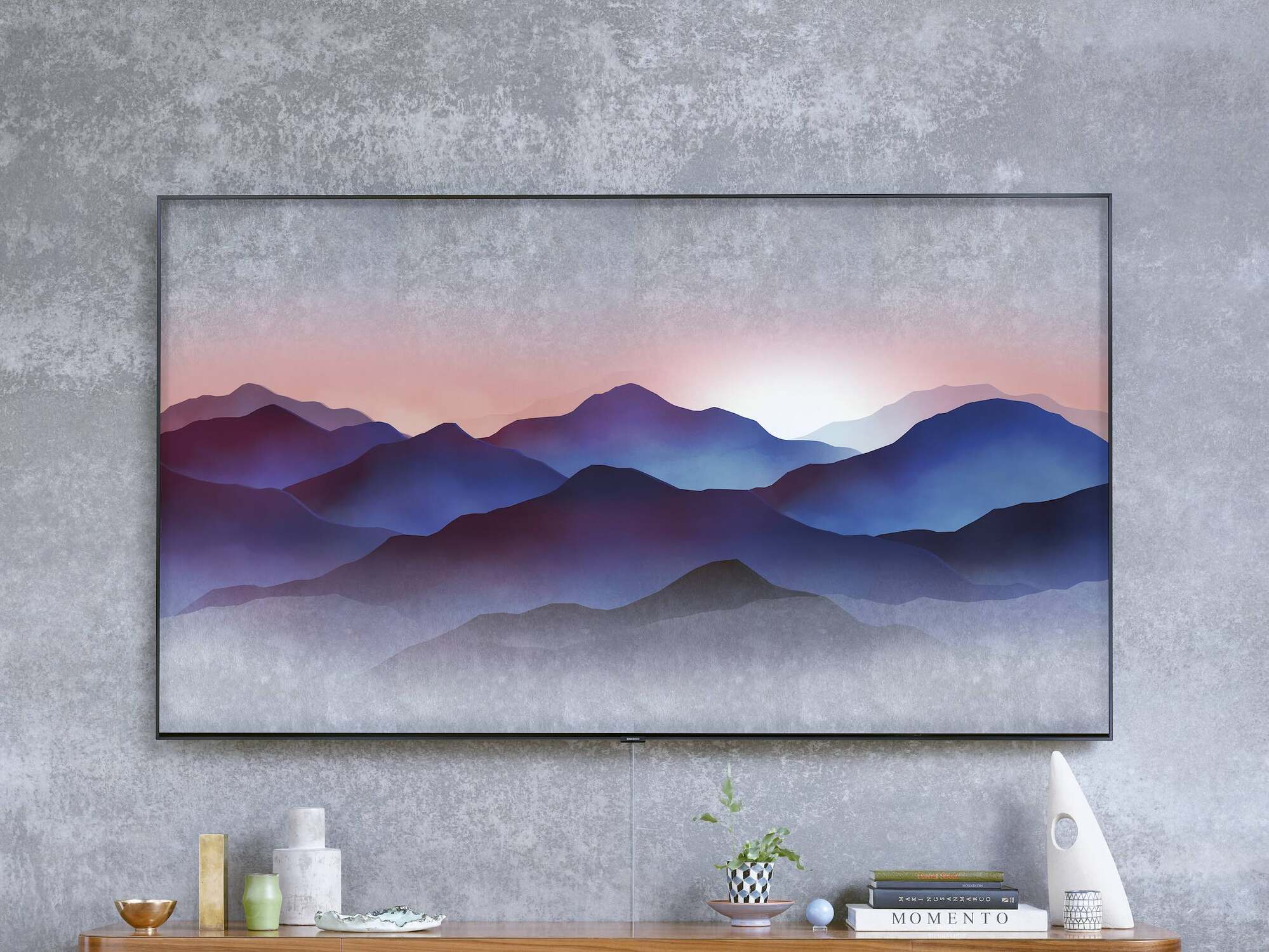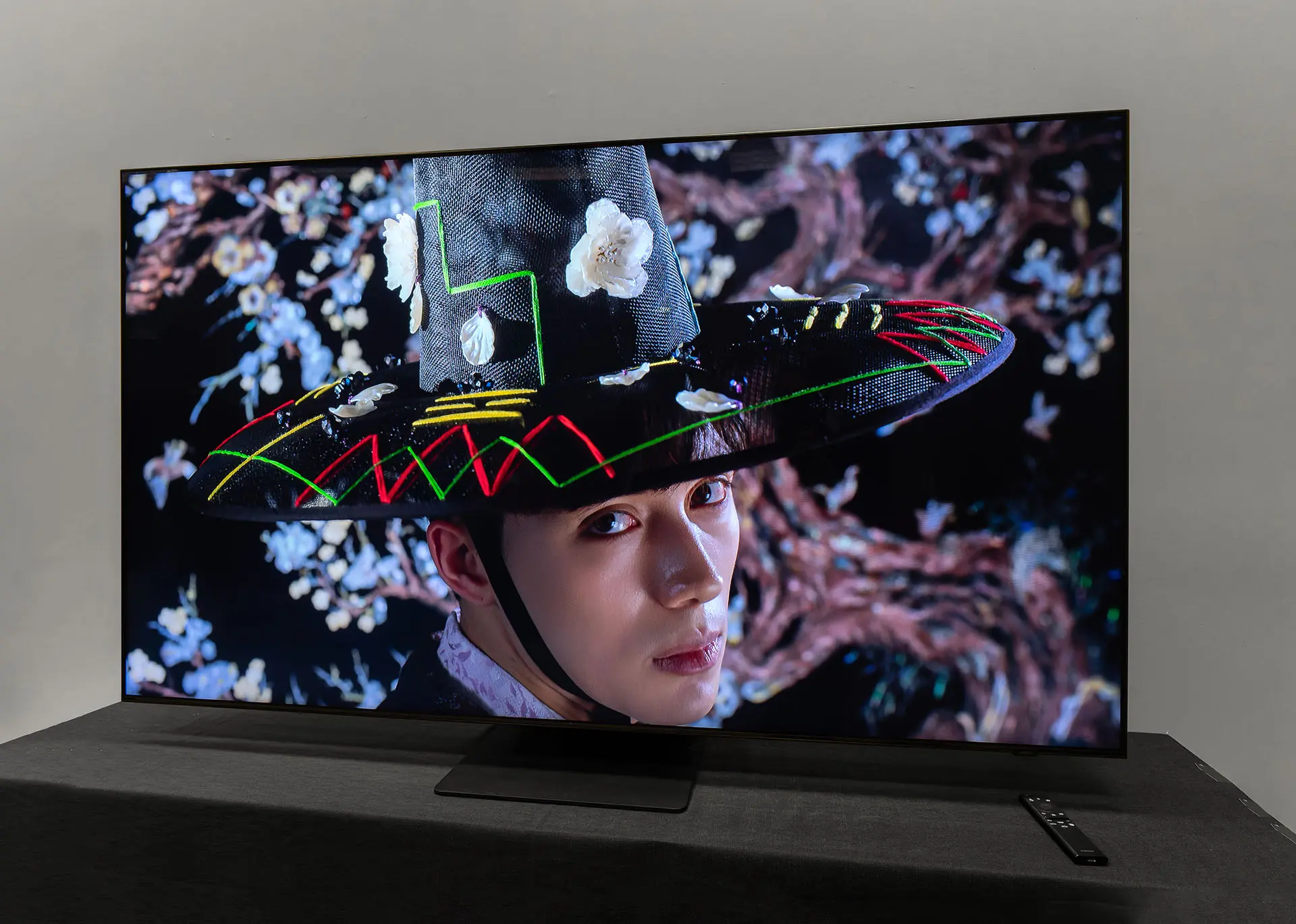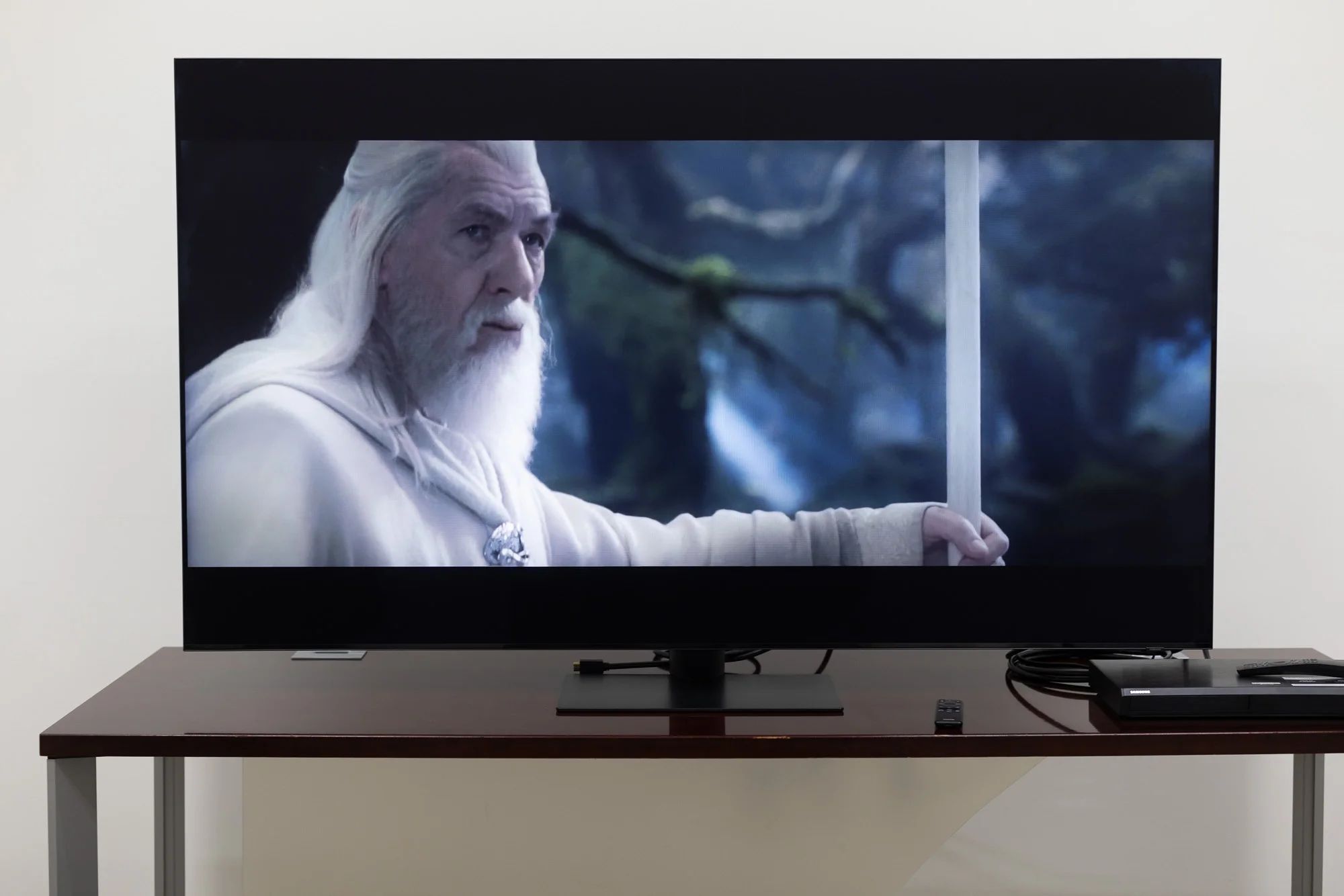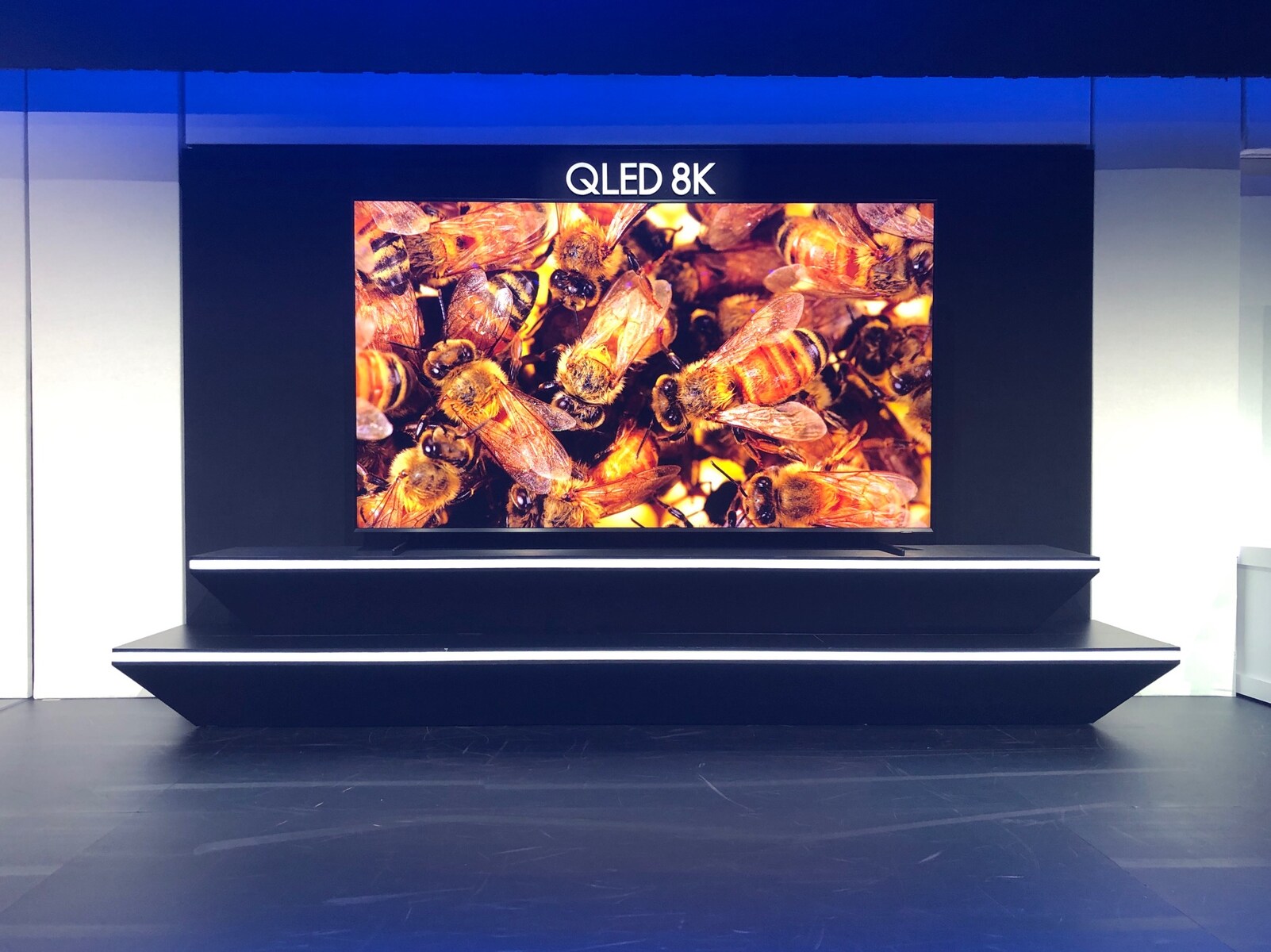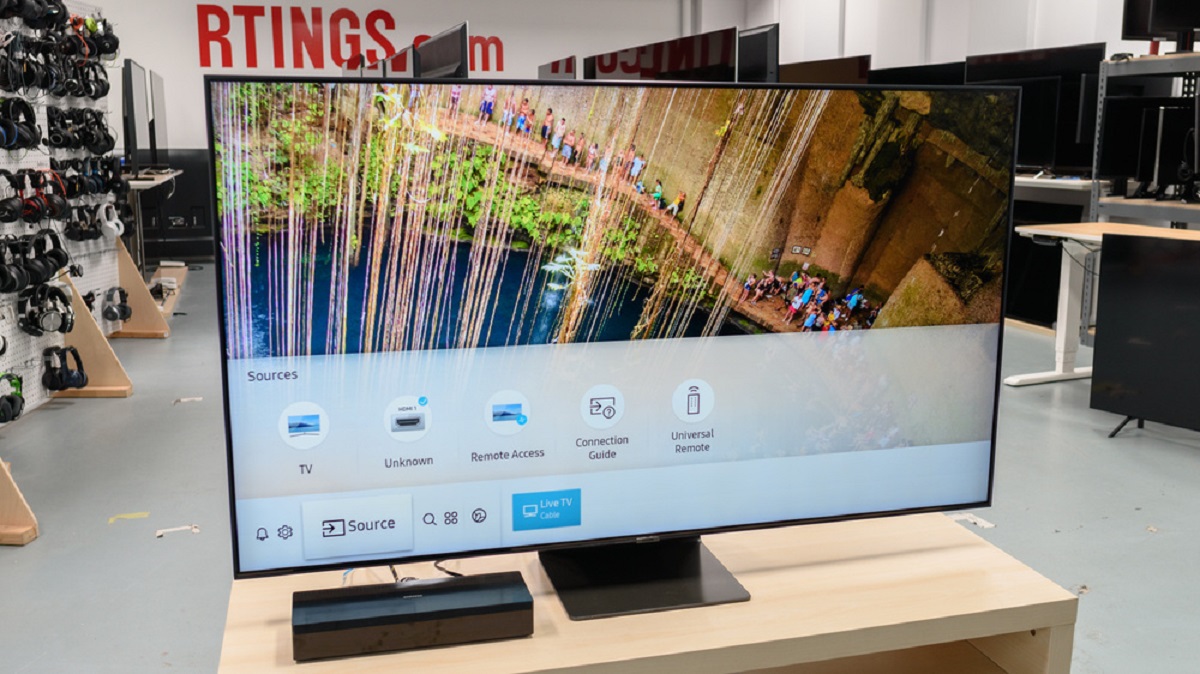Introduction
Welcome to our comprehensive guide on how to fix dead pixels on a QLED TV. While owning a QLED TV offers incredible picture quality and vivid colors, dead pixels can be an unfortunate occurrence that affects your viewing experience. Dead pixels are tiny, non-functioning spots on the screen that can appear as black, white, or colored dots, and they can be quite distracting. However, there’s no need to worry, as there are several methods you can try to fix these dead pixels and restore your TV to its optimal condition.
Before we dive into the solutions, it’s important to understand what causes dead pixels and how to identify them. Dead pixels can occur due to manufacturing defects, physical damage, or even natural aging of the display. They may appear as single isolated spots or in clusters, and their size can vary. Identifying dead pixels is relatively easy, especially on a QLED TV, which has a high-resolution display. We’ll guide you through the process of identifying dead pixels so that you can pinpoint the exact locations.
This guide will provide you with three different methods to fix dead pixels on your QLED TV. The first method involves using a manual massage technique that can help revive stuck pixels. The second method explores the use of screen fixing software, which can rapidly cycle through colors to stimulate the affected pixels. Lastly, we’ll discuss the option of professional repair if the previous methods don’t yield satisfactory results.
Additionally, we’ll share some prevention tips to keep your QLED TV in optimal condition and minimize the chances of dead pixels occurring in the future. Taking proper care of your TV can go a long way in ensuring its longevity and performance.
So, if you’re ready to bid farewell to those pesky dead pixels and restore the pristine quality of your QLED TV, let’s jump right into the methods and solutions to fix this issue with ease.
What are Dead Pixels?
Dead pixels are small, non-functioning areas on a QLED TV screen that do not display the intended colors or images. They may appear as black, white, or colored dots, and they can be quite noticeable, especially in darker scenes or solid-colored backgrounds. These dead pixels can be an annoyance, as they can draw attention away from the immersive viewing experience and disrupt the overall picture quality of the TV.
Dead pixels are typically caused by manufacturing defects, physical damage, or natural aging of the display. Manufacturing defects occur when individual pixels are not able to activate or respond properly, resulting in a permanent “off” state. Physical damage, such as from accidental impacts or pressure on the screen, can also lead to dead pixels. In some cases, constant exposure to high temperatures or excessive humidity can contribute to the development of dead pixels over time.
There are different types of dead pixels, including stuck pixels, hot pixels, and dead pixels. Stuck pixels are pixels that remain in a single color, often appearing as a bright dot. Hot pixels, on the other hand, are pixels that are constantly lit and emit a noticeable glow. Dead pixels, as the name suggests, do not display any color at all. They appear as black or unresponsive areas on the screen and can be the most noticeable type of dead pixel.
It’s worth noting that dead pixels can vary in size, from being a single, isolated dot to forming clusters or lines on the screen. The severity of the issue depends on the number and location of the dead pixels. While a few scattered dead pixels may be less noticeable, a cluster or line of dead pixels can significantly impact the viewing experience, especially in areas of high contrast or during gaming sessions.
Identifying dead pixels on a QLED TV is relatively straightforward, thanks to the high resolution and clarity of these screens. You can use various methods, such as running pixel tests or inspecting the screen closely to spot any abnormalities. In the following section, we’ll delve into how to identify dead pixels on your QLED TV so that you can take the necessary steps to fix or repair them.
Causes of Dead Pixels
Dead pixels on a QLED TV can be caused by a variety of factors. Understanding these causes can help you prevent dead pixel issues in the future and take appropriate measures to fix or repair them. Here are the most common causes of dead pixels:
1. Manufacturing Defects: Some dead pixels are a result of manufacturing defects. During the production process, individual pixels may be improperly manufactured or damaged, leading to their malfunction. These defects can occur in a small percentage of TVs, and they are typically covered under warranty for a replacement or repair.
2. Physical Damage: Drops, impacts, or pressure on the TV screen can cause dead pixels. Excessive force can damage the delicate electronics behind the pixels, rendering them non-functional. It’s important to handle your QLED TV with care and avoid any physical damage that can result in dead pixel issues.
3. Age and Wear: Over time, the organic materials and components within the TV display may degrade, leading to dead pixels. Aging can cause pixels to gradually stop functioning properly, resulting in permanent dark spots or unresponsive areas on the screen. Regular usage and prolonged exposure to high temperatures can accelerate this process.
4. Extreme Temperatures and Humidity: Exposure to extreme temperatures, whether excessively cold or hot, can cause dead pixels. High levels of humidity can also contribute to the development of dead pixels due to moisture seeping into the display and affecting the electronics. It’s important to keep your TV in a controlled environment with moderate temperature and humidity levels.
5. Screen Burn-In: Although QLED TVs are less prone to screen burn-in compared to older display technologies like OLED, it can still occur under certain circumstances. Prolonged static images or logos displayed on the screen for extended periods can cause image retention and potentially lead to dead pixels. Avoid leaving static content on your TV screen for too long to minimize the risk of burn-in.
Identifying the cause of dead pixels on your QLED TV can help you determine the appropriate course of action to fix or repair them. In the next section, we’ll explore methods to accurately identify dead pixels on your QLED TV so that you can take the necessary steps to resolve the issue.
How to Identify Dead Pixels on a QLED TV
Identifying dead pixels on your QLED TV is essential to determine the extent of the issue and take appropriate measures to fix or repair them. Here are some methods to help you accurately identify dead pixels:
1. Visual Inspection: Start by visually examining the screen of your QLED TV. Look for any small black or unresponsive spots on the display. Pay close attention to solid-colored backgrounds, especially those with high contrast, as dead pixels are more noticeable in these areas. Additionally, check for any clusters or lines of dead pixels that may be present.
2. Pixel Test Videos: Play pixel test videos on your QLED TV. These videos display a series of rapidly changing colors to stimulate the pixels. As the colors cycle, observe if any pixels remain in a single color or appear as black spots. Pixel test videos are available online and can be easily accessed and played on your TV.
3. Pixel Checker Apps: Download and install pixel checker apps on a compatible smartphone or tablet. These apps usually display solid colors or patterns that can help identify dead pixels. Use your device’s screen to visualize the patterns and compare them against your QLED TV screen.
4. Dead Pixel Finder Tools: Various online tools and websites offer dead pixel finder tools. These tools typically display solid colors or flashing patterns that allow you to interactively check for dead pixels on your QLED TV. Simply navigate to these websites or use the provided tools to perform the dead pixel test.
When performing these tests, ensure that you have a clean and well-lit environment to accurately identify dead pixels. It’s also recommended to run the tests on different input sources (e.g., HDMI, built-in apps) to check if the dead pixels persist across all sources.
Once you have identified the dead pixels on your QLED TV, you can proceed with the methods outlined in the following sections to attempt to fix or repair them. Depending on the severity and number of dead pixels, different methods may yield different results. Let’s explore the various methods available to fix dead pixels on a QLED TV in the next section.
Fixing Dead Pixels
While dead pixels on a QLED TV can be frustrating, there are several methods you can try to fix them and restore your TV’s optimal display quality. Here are three common methods to fix dead pixels:
1. Method 1: Manual Massage Technique
One method to revive stuck pixels is by applying gentle pressure to the affected area. Here’s how you can attempt this technique:
- Turn off your QLED TV and allow it to cool down completely.
- Locate the dead pixels on the screen.
- Take a soft, lint-free cloth and fold it several times to create a pad.
- Apply slight pressure to the dead pixel area using the cloth pad. Use circular or gentle tapping motions. Do not apply excessive force.
- While applying pressure, turn on the TV and check if the dead pixel has disappeared. Repeat the process if necessary.
- If the manual massage technique does not work, proceed to the next method.
2. Method 2: Screen Fixing Software
Screen fixing software can help stimulate and refresh the pixels on your QLED TV. Follow these steps to use screen fixing software:
- Download and install a reputable screen fixing software on a laptop or computer.
- Connect your QLED TV to the laptop or computer using an HDMI cable.
- Launch the screen fixing software and follow the instructions provided to run the program.
- The software will display a series of rapidly changing colors to stimulate the pixels.
- Let the software run for a recommended duration, typically around 20 minutes.
- After the process is complete, disconnect the TV from the computer and check if the dead pixels are fixed.
- If the dead pixels persist, it may be necessary to consider professional repair or consult the manufacturer for further assistance.
3. Method 3: Professional Repair
If the previous methods do not yield satisfactory results, you may need to seek professional repair for your QLED TV. Contact the manufacturer or a certified technician to discuss the dead pixel issue and explore repair options. Keep in mind that the availability and cost of professional repair may vary depending on your location and the warranty status of your TV.
It’s important to note that these methods may not always guarantee a complete fix for dead pixels. The success of each method depends on factors such as the severity of the dead pixels, the type of dead pixels, and the overall condition of your QLED TV. Prevention is key to minimizing the occurrence of dead pixels, so let’s discuss some essential preventative measures in the next section.
Method 1: Manual Massage Technique
The manual massage technique is a simple yet effective method to potentially revive stuck pixels on your QLED TV. Follow these steps to attempt this method:
- Turn off your QLED TV and allow it to cool down completely.
- Locate the dead pixel(s) on the screen. You can visually inspect the display for any black or unresponsive spots.
- Take a soft, lint-free cloth and fold it several times to create a pad. Ensure that the cloth is clean and free from any abrasive particles that may scratch the screen.
- Gently apply pressure to the dead pixel area using the cloth pad. Use circular motions or gentle tapping motions. The goal is to stimulate the affected pixel(s) without causing any damage. Avoid applying excessive force as it can potentially damage the screen.
- While applying pressure, turn on the QLED TV and check if the dead pixel has disappeared or improved. Sometimes, the pressure from the massage can re-align the pixel and restore its functionality.
- If the dead pixel persists, repeat the process with slightly varied pressure or try targeting the specific pixel from different angles.
- Continue to experiment with the manual massage technique for a few minutes to determine if any progress is made.
- If the dead pixel does not revive after several attempts, you may need to explore alternative methods or consider professional repair.
It’s important to note that the success of the manual massage technique depends on the nature of the dead pixel and its underlying cause. While this technique has been known to work in some cases, it is not a guaranteed solution for all dead pixel issues.
If the manual massage technique does not yield satisfactory results, you can explore other methods, such as screen fixing software or professional repair. Each method has its own benefits and limitations, and the best approach may vary depending on the specific circumstances of the dead pixel issue on your QLED TV.
Now that we have covered the manual massage technique to fix dead pixels, let’s explore the next method involving the use of screen fixing software.
Method 2: Screen Fixing Software
If the manual massage technique does not work for your dead pixel issue on your QLED TV, you can try using screen fixing software. This method involves running specialized software that stimulates the pixels and attempts to revive them. Follow these steps to utilize screen fixing software:
- Start by researching and downloading reputable screen fixing software from trusted sources. Ensure that the software is compatible with your QLED TV and follow any installation instructions provided.
- Connect your QLED TV to a computer or laptop using an HDMI cable. Make sure that the computer or laptop is turned on and functioning properly.
- Launch the screen fixing software on your computer or laptop, and follow the instructions provided by the software.
- The screen fixing software typically displays a sequence of rapidly changing colors or patterns. These colors and patterns are designed to stimulate the pixels and potentially revive stuck or unresponsive areas on the QLED TV screen.
- Allow the software to run for the recommended duration, which is usually around 20 minutes. During this time, the software will cycle through various colors and patterns.
- Monitor the screen closely and check if the dead pixels have improved or disappeared. Take note of any changes or progress made during the software-run.
- After the process is complete, disconnect the QLED TV from the computer or laptop.
- Turn on the QLED TV and inspect the display to see if the dead pixels have been fixed. It may be helpful to display solid colors or use pixel test videos to further evaluate the effectiveness of the software.
- If the dead pixels persist and the screen fixing software does not yield satisfactory results, you may need to consider other methods or consult a professional for repair.
It’s important to note that screen fixing software can be effective for certain types of dead pixels, such as stuck or non-responsive pixels. However, the success rate may vary depending on the severity of the issue and the underlying cause of the dead pixels on your QLED TV.
If the problem persists even after attempting the manual massage technique and using screen fixing software, it may be necessary to explore professional repair options or consult the manufacturer for further guidance and assistance.
Now that we’ve covered the screen fixing software method, let’s move on to the next section, which discusses the option of professional repair for dead pixels on a QLED TV.
Method 3: Professional Repair
If the previous methods mentioned, such as manual massage and screen fixing software, don’t resolve the dead pixel issue on your QLED TV, it may be time to consider professional repair. Professional repair involves seeking assistance from certified technicians or contacting the manufacturer for professional guidance. Here’s what you need to know about professional repair for dead pixels:
- Contact the Manufacturer: If your QLED TV is still under warranty or within the manufacturer’s specified period for repairs, contact the manufacturer for assistance. They may provide repair services or offer a replacement if the dead pixel issue falls under the warranty coverage.
- Certified Technicians: If your TV is no longer covered under warranty, you can search for certified technicians or authorized service centers that specialize in TV repairs. These professionals have the expertise and equipment to diagnose and repair dead pixels on your QLED TV.
- Assessment and Cost: Once you reach out to a professional repair service, they will assess the extent of the dead pixel issue and provide an estimate of the repair cost. The cost will depend on factors such as the number of dead pixels, the complexity of the repair, and the type of repair required.
- Repair Options: The repair technician will determine the best course of action based on the assessment. In some cases, they may be able to fix the dead pixels by replacing certain components or performing pixel restoration techniques. However, in more severe cases, they may recommend replacing the entire display panel or suggest other appropriate repairs.
- Considerations: It’s important to consider the cost of professional repair and weigh it against the value of your QLED TV. If the repair cost is high, it may be worth exploring the option of purchasing a new TV, especially if your current model is outdated or nearing the end of its lifespan.
- Research and Choose Reliable Repair Services: Before entrusting your QLED TV to any repair service, do thorough research. Read reviews, check their certifications, and ensure they have a good reputation for repairing dead pixels on QLED TVs.
Professional repair can be a viable option for resolving dead pixel issues, especially if other methods have been unsuccessful. However, it’s important to consider the potential costs involved and determine if it’s economically feasible based on the age and value of your QLED TV.
Keep in mind that professional repair services may not guarantee a 100% fix for dead pixels, especially if the damage is severe or extensive. It’s always advisable to consult with the professionals, discuss your options, and make an informed decision based on their recommendations.
Now that we’ve covered the professional repair method, let’s move on to the next section, which provides essential prevention tips to minimize the occurrence of dead pixels on your QLED TV.
Prevention Tips for Dead Pixels
While dead pixels can sometimes be inevitable, there are several preventative measures you can take to minimize their occurrence and maintain the optimal condition of your QLED TV. Here are some essential prevention tips:
- Handle with Care: Treat your QLED TV with care to avoid physical damage that can lead to dead pixels. Avoid touching the screen with sharp objects or applying excessive pressure while cleaning.
- Avoid Extreme Temperatures and Humidity: Keep your QLED TV in a controlled environment with moderate temperature and humidity levels. Exposure to extreme temperatures or high humidity can contribute to the development of dead pixels over time.
- Minimize Static Images: Limit the display of static images or logos on your QLED TV for extended periods. Prolonged exposure to static content can potentially result in screen burn-in, which may lead to dead pixels. If possible, use screensavers or periodic screen shifts to minimize static image retention.
- Proper Cleaning: Clean your QLED TV screen regularly using a soft, lint-free cloth. Avoid using harsh chemicals or abrasive materials that can damage the screen. Follow the manufacturer’s recommendations for cleaning your specific model.
- Turn Off When Not in Use: When not in use, turn off your QLED TV instead of leaving it on standby mode for prolonged periods. This helps minimize the stress on the display and reduces the chances of dead pixel development.
- Perform Regular Updates: Keep your QLED TV’s firmware and software up to date. Regular updates often include bug fixes and improvements that can help prevent potential issues, including dead pixels.
- Use Surge Protectors: Connect your QLED TV to surge protectors to safeguard it from sudden power surges or fluctuations. Rapid power fluctuations can potentially damage the display and lead to dead pixels.
- Read the User Manual: Familiarize yourself with your QLED TV’s user manual to understand specific guidelines and recommendations from the manufacturer regarding maintenance, use, and prevention of dead pixels.
By following these prevention tips, you can significantly reduce the chances of dead pixels on your QLED TV. While complete avoidance may not always be possible, taking proactive measures will help maintain the longevity and performance of your TV’s display.
Always remember to refer to the manufacturer’s guidelines and recommendations to ensure you are following the appropriate care and maintenance practices for your specific QLED TV model.
Now that we’ve covered the prevention tips, let’s conclude this guide on fixing dead pixels on a QLED TV.
Conclusion
Dealing with dead pixels on a QLED TV can be frustrating, but with the methods and tips outlined in this guide, you can take steps to fix and prevent dead pixel issues. Whether you try the manual massage technique, use screen fixing software, or opt for professional repair, there are options available to revive or repair dead pixels on your QLED TV.
Remember, dead pixels can be caused by manufacturing defects, physical damage, or natural aging of the display. Identifying dead pixels through visual inspection, pixel tests, and checker apps can help you pinpoint the affected areas.
The manual massage technique involves applying gentle pressure to the dead pixel area, while screen fixing software stimulates the pixels through rapid color changes. These methods can potentially revive stuck pixels and restore the optimal display quality of your QLED TV.
If these methods are unsuccessful, professional repair services can provide expert assistance in diagnosing and fixing dead pixels. Contact the manufacturer or certified technicians to discuss the dead pixel issue and explore repair options.
To minimize dead pixel occurrences, handle your QLED TV with care, avoid extreme temperatures and humidity, minimize static image exposure, perform regular updates, and follow proper cleaning practices.
By taking these prevention measures, you can maintain the longevity and performance of your QLED TV’s display.
Remember to consider the costs involved in professional repair and weigh them against the value of your TV, especially if the dead pixel issue persists.
With patience and the right approach, you can effectively address dead pixel issues and enjoy a crisp and vibrant viewing experience on your QLED TV.








